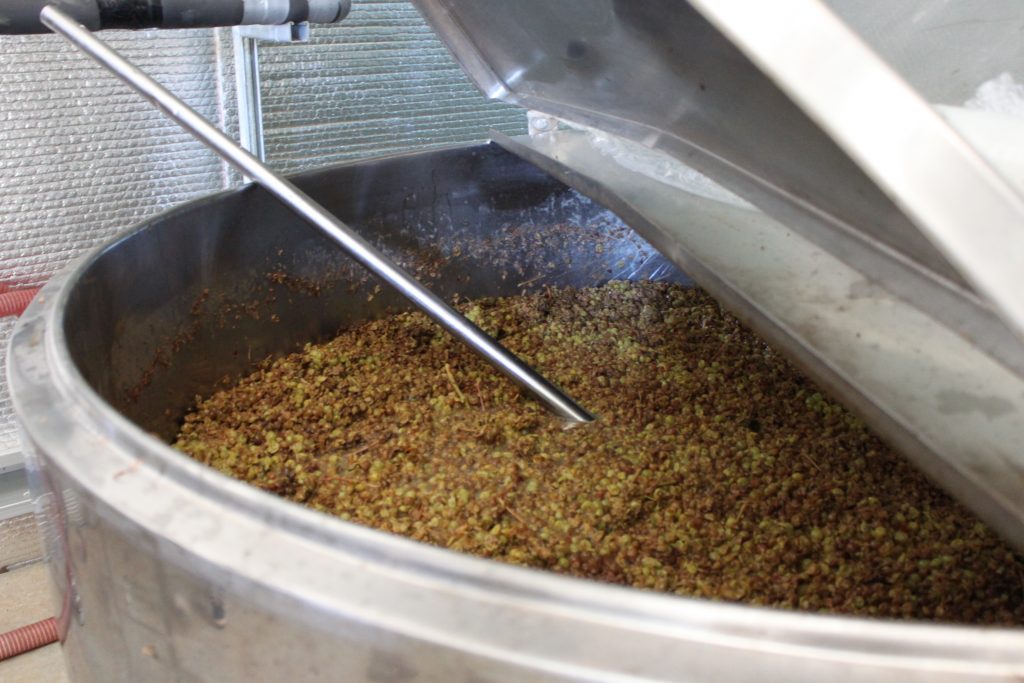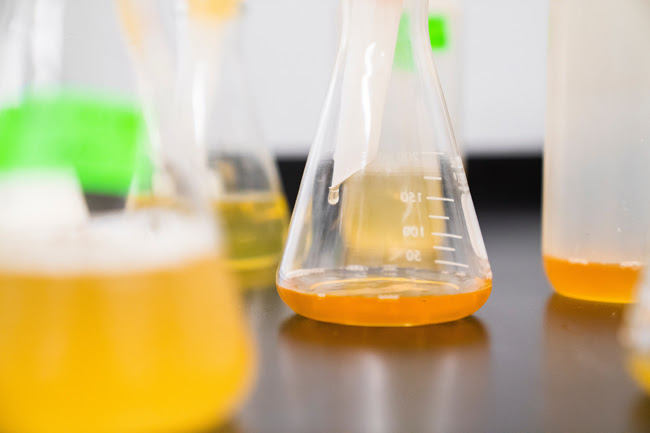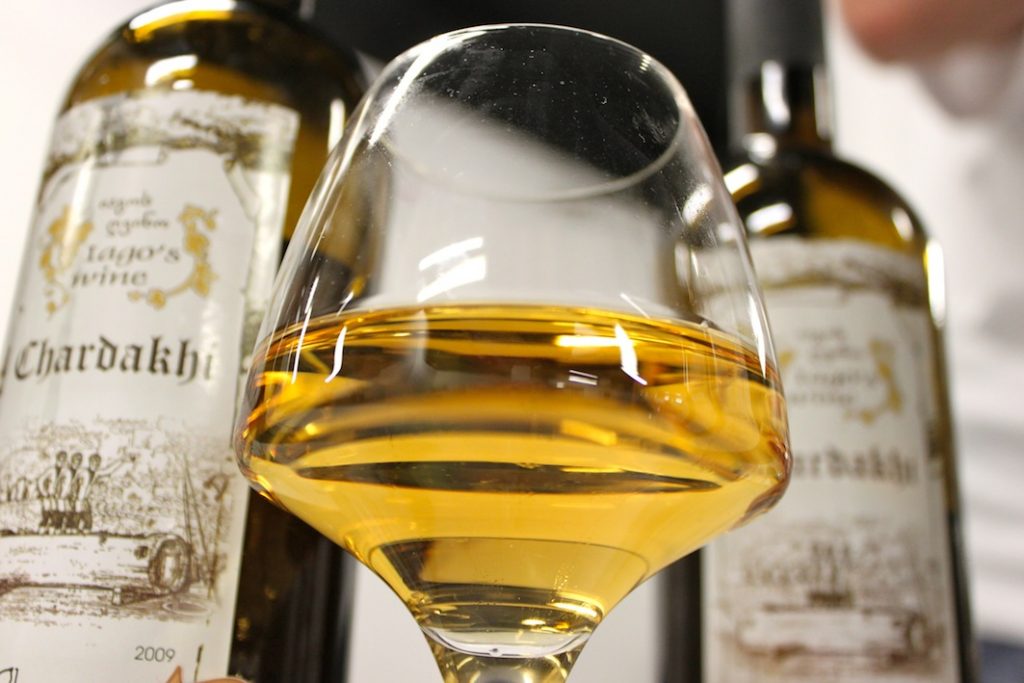Less is more except when the opposite is the case

Extracting sunbeams from cucumbers may be beyond their capabilities, but some oenologists seem to have the alchemical inclination to squeeze base gold out of simple grape juice. Wanting more from less is akin to seeking fool’s gold. Discovering what the wine has within it and expressing that accordingly relies on sensitive taste and touch, as well as a willingness to submit to the needs of the wine rather than the other way round.
Extraction, of course, is particularly pertinent to red winemaking. The process is not unlike brewing tea – i.e. the longer and the more aggressive the extraction process, the bigger, stronger and more robust the wine. And the more it tastes like tea (or coffee!)
Winemakers use various extraction methods, including cold maceration before fermentation for extra colour, pumping over and punching down techniques performed during fermentation to ensure that the juice and the skins are in constant contact, and extended maceration on the skins post-fermentation to extract even more tannin and flavour compounds.
“Mystification is simple; clarity is the hardest thing of all.”
—Julian Barnes, Flaubert’s Parrot
Bigger is not always better, however. Over-extraction is increasingly a common fault in some wines, when the wines are certainly big and powerful, but can be equally heavy, maladroit, lacking balance, grace or any vestige of drinkability.
Not only were the wines texturally sclerotic, they were also husks, and yet their flattering richness convinced some critics that this substance was indeed all about style. And vice versa.
While the appropriate amount of extraction depends greatly on the quality and style of wine being made, it also depends on the nature of the grape variety. Cabernet Sauvignon, it might be argued, can handle a relatively high level of extraction and maintain its balance. Pinot Noir, by contrast, is a more delicate grape, requiring finesse and elegance to express itself most eloquently, and, overly extracted, becomes burly, monolithic and far from charming. In the 1980s many Burgundian winemakers viewed it as a badge of honour to produce wines with more colour, more tannin and more alcohol – a bit like baking fantastic bread and then making into toast with butter, lashings of clotted cream and dollops of jam. Not only were the wines texturally sclerotic, they were also husks, and yet their flattering richness convinced some critics that this substance was indeed all about style. And vice versa.

The process of extraction begins in the vineyard and is essential to the material of the grapes. The very way you set up your vines determines the process of ripening. Letting your grapes hang on the vine to achieve sur-maturité in order to obtain more sugar and more natural extract, is a favoured strategy amongst viticulturists. Conventional wisdom also dictates that phenolic ripeness is a prerequisite for making balanced wines. Yet this search for ripeness often results in grapes that yield high potential alcohol and correspondingly low acid. A properly-run organic or biodynamic vineyard may well achieve this ripeness earlier with all the other components in relative balance, which suggests that both vineyard managers and winemakers might want to rethink attachments to “wine profiling.” Real substance – rather than extracted ripeness – comes from healthy grapes, healthy grapes originate in healthy vineyards (which have found their natural balance) which is a holistic way of saying that balance in wine may be attained by a natural balance in the vineyard.
Extraction, of course, has become equated with over-extraction. When we think of the word we imagine the vigneron squeezing the maximum out of the vineyard, the vine and the juice – to the point where efficiency metamorphoses into superimposition.
Real substance – rather than extracted ripeness – comes from healthy grapes, healthy grapes originate in healthy vineyards
The result? Three decades or so of winemaking where oak was used lavishly (and incontinently) and where the wines became bigger, bolder and brassier, sweeter, more saturated and more seasoned. Unction was their ultimate function, the volume turned up dramatically as if wines had to be heard to be seen. Our palates became attuned to this modern interpretation of loud techno-wine partly because there was so little choice, and partly because oenologists were interpreting the critical reverence for this style of wine as an imperative to go still further down this winemaking path. Times they are a-changing, however; now there is a wider recognition that intensely rich wines are not so delicious to drink and winemakers are responding accordingly. Fifty years ago our ancestors would not even recognise what we claim to be a “conventional wine style”. And so the wheel turns. Pragmatism replaces pretentiousness.
In Chile, South Africa and Australia one can taste examples of wines from the 1980s (and earlier) made with minimal extraction and moderate-to-low alcohol. They still preserve their unique bony identity, whilst their fleshy meretricious modern brethren have already collapsed into black holes of jam. The cultural-and-consumer-driven revolution in winemaking impelled winemakers to “re-culture” the wine (by which I mean denature, or subtract that which gives it life). We often hear winemakers say that if they wish to make a wine that they themselves could happily drink they would have to unlearn the techniques they were taught at college. Which leads us to ask the question: “Why would you make wine that you would not drink yourself?” Answers on a postcard to certain well-known oenologists.
Knowledge is turning off the power occasionally
Kranzberg’s First Law states: “Technology is neither good nor bad: nor is it neutral”. At any given time we do not necessarily get the tools that would – in absolute terms – make our wines better. But we think those tools should be used. And sometimes by doing more and more to a wine, we achieve less and less.

When we think of science applied to wine we conjures images of big stainless steel, thermo-regulated tanks and white-coated technicians in laboratories precisely analysing the sugar levels, dry extracts, acid levels and so forth. This is the future perfect world where nothing is left to chance and everything can be corrected. In terms of winemaking corrective or cosmetic surgery becomes an end in itself, whilst in terms of wine appreciation the question that is always asked is: “Is it good?” not “Is it true?” People who live in future perfect world want everything to be quantifiable. This predilection to understand disconnects us from the mystery of things. Our imagination, as Bunuel remarks, is a crucial privilege; it gives us our freedom – we should, therefore, cherish the unexpected.
So although the use of technology can facilitate certain notional technical improvements it may also serve to emasculate real flavour and character. Its existence becomes an intervention for the sake of it with a tendency towards meddling and maquillage. You cannot blame the technology for existing; it is a human choice to use additives and play with the latest gizmos. The desire to extract flavour is now governed by habit rather than need. As Hank Beckmeyer, a leading natural winemaker in California, rightly observes: “By doing less we can accomplish more.”
Extraction, of course, has become equated with over-extraction.
Over-extraction is the sensation that there is more present in the wine than there should be. If we are looking for unalloyed vitality then extraction is the perceived blockage that diffuses the natural urgent fluency of the wine, allowing it to go so far but no further. I am not necessarily talking about delicacy or elegance – just as human beings are quirky, asymmetrical creatures rather than precise constructs, a wine can be all angles, lumps and edges, all nervous energy.
If one talks about certain natural wines one can reverse the coin. Non-extraction may be the result of chemical neutralisation or manipulation of the juice. Consider certain Rieslings or Sauvignon which are cold-stabilised, fermented at cold temperatures with inoculated yeasts, hit with hefty doses of sulphur and clarified, filtered, fined… A stripping process – part of an overzealous desire to avoid phenolic extraction and an uptake of flavours that might be considered inimical to the making of a “clean wine”. Deliberate phenolic extraction on white wines, picking up tannins, bitterness, mineral salts, is about leaving in the all the bits. By removing these vital components, the stuff of grapes if you will, you may also leave the wine defenceless, and to compensate you must find the ways and means of protecting the wine. Thus non-extraction can result in many obvious interventions.

Georgian wines, for example, celebrate skin contact with alacrity. Indeed they take their life nourishment from the skins and the stalks. For all their abrasiveness these wines are not heavy or clumpy. We see that extraction can work as a natural means of discovering flavour and texture, in that the raw material of the grapes shapes the winemaker’s decisions. With skin contact wines, the extraction is the wine.
Unchained melody
It is tempting to say that a wine should aspire to transparency –– it should taste seamless and natural as opposed to the aggregate of supernumerary manipulations. The more that is added to it, the more its originality is stripped and the aesthetic impression that the wine is somehow self-generating is dimmed. Stephen Dedalus’s observation in A Portrait of the Artist as a Young Man that “Beauty can be this: The artist, like the God of the creation, remains within or behind or beyond or above his handiwork, invisible, refined out of existence, indifferent, paring his fingernails” could just as easily describe the role of the winemaker as invisible facilitator, albeit one who has dirt under his or her pared fingernails.
Extraction, of course, has become equated with over-extraction.
Wines can be square, wines can be linear. The ones that appeal most are conduits for minerals, soil, yeasts, sunlight, air – the seething terroir of life. And perhaps the wines that I love (and taste is personal) aspire to a simple beauty, where the winemaker is the invisible, seemingly effortless artist (or scientist if you will) who twirls a baton – or flicks a switch – and brings the results of nature’s energy into clear focus. This can be by allowing extraction to happen naturally, the multigrain approach, and by avoiding the urge to make the wine more impressive than it is or needs to be.
*
Interested in finding more about the wines we carry? Contact us directly:
shop@lescaves.co.uk | sales@lescaves.co.uk | 01483 538820
*Note: We are still open for business, doing deliveries, and keen to help everyone with their booze needs in this difficult time. Natural wine lovers can visit our online shop and order online!

